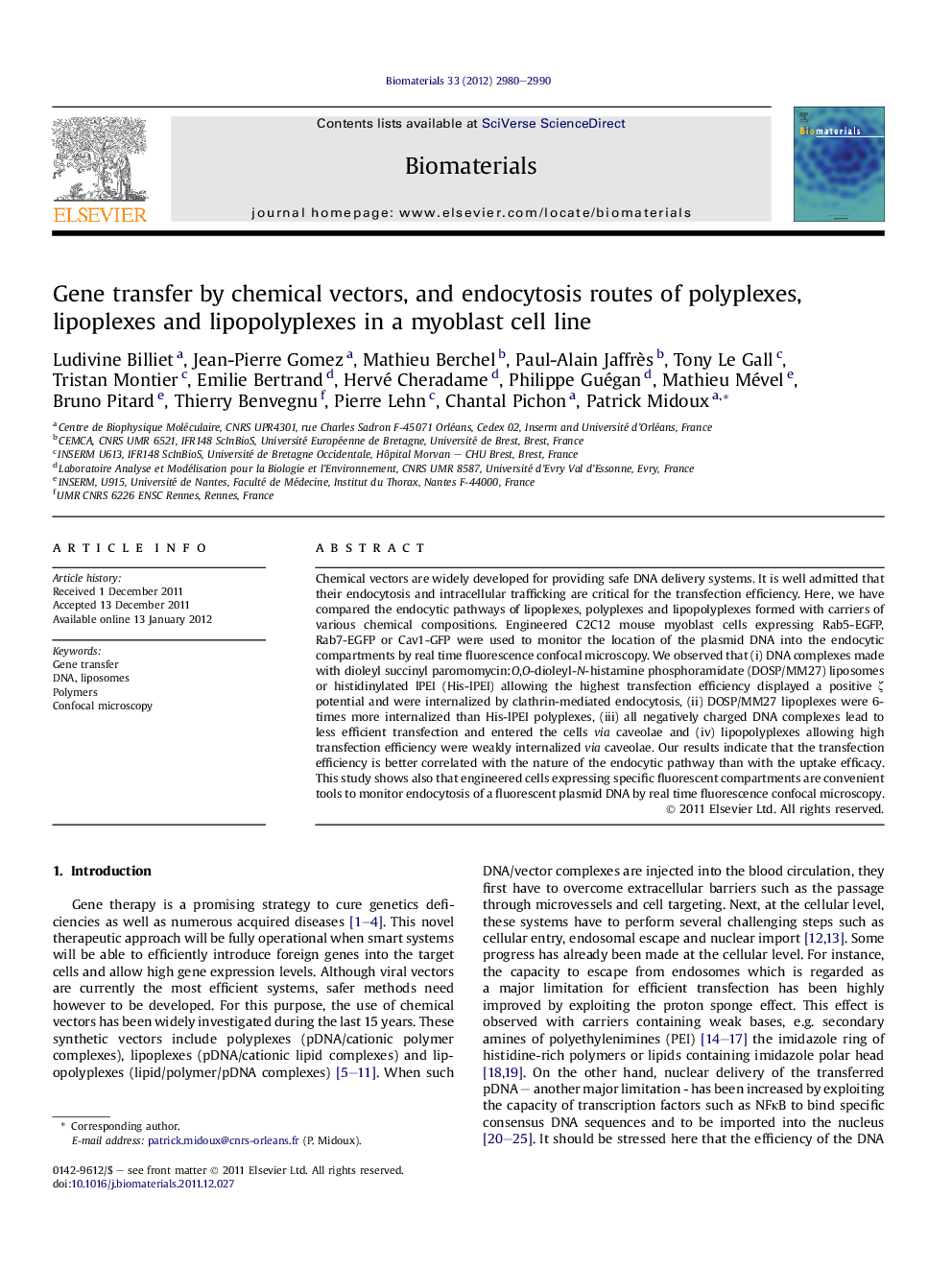| Article ID | Journal | Published Year | Pages | File Type |
|---|---|---|---|---|
| 7326 | Biomaterials | 2012 | 11 Pages |
Chemical vectors are widely developed for providing safe DNA delivery systems. It is well admitted that their endocytosis and intracellular trafficking are critical for the transfection efficiency. Here, we have compared the endocytic pathways of lipoplexes, polyplexes and lipopolyplexes formed with carriers of various chemical compositions. Engineered C2C12 mouse myoblast cells expressing Rab5-EGFP, Rab7-EGFP or Cav1-GFP were used to monitor the location of the plasmid DNA into the endocytic compartments by real time fluorescence confocal microscopy. We observed that (i) DNA complexes made with dioleyl succinyl paromomycin:O,O-dioleyl-N-histamine phosphoramidate (DOSP/MM27) liposomes or histidinylated lPEI (His-lPEI) allowing the highest transfection efficiency displayed a positive ζ potential and were internalized by clathrin-mediated endocytosis, (ii) DOSP/MM27 lipoplexes were 6-times more internalized than His-lPEI polyplexes, (iii) all negatively charged DNA complexes lead to less efficient transfection and entered the cells via caveolae and (iv) lipopolyplexes allowing high transfection efficiency were weakly internalized via caveolae. Our results indicate that the transfection efficiency is better correlated with the nature of the endocytic pathway than with the uptake efficacy. This study shows also that engineered cells expressing specific fluorescent compartments are convenient tools to monitor endocytosis of a fluorescent plasmid DNA by real time fluorescence confocal microscopy.
